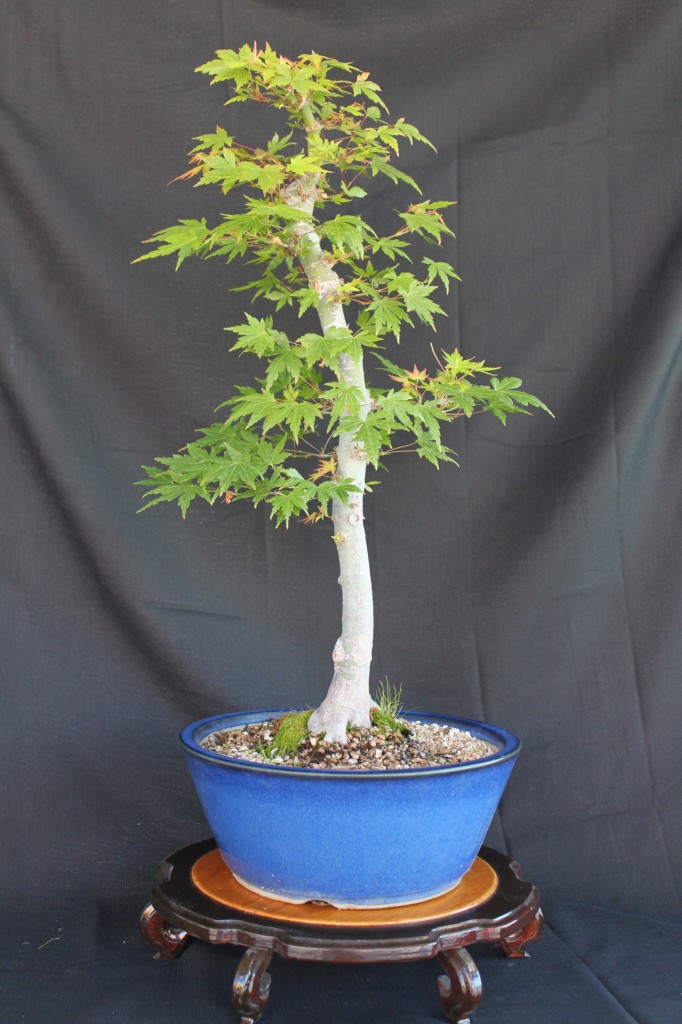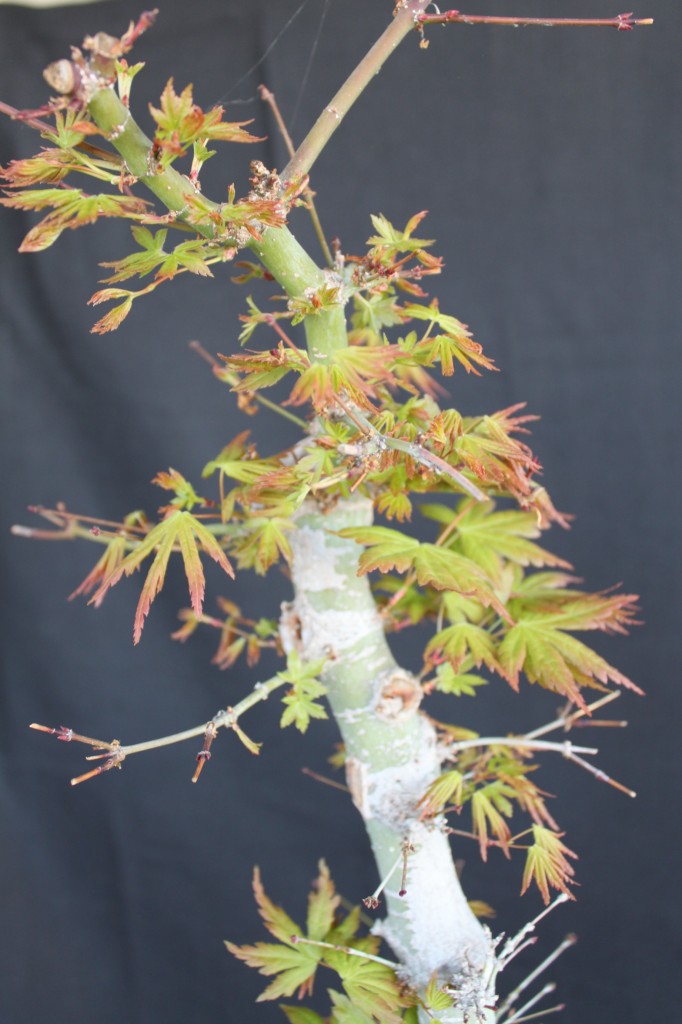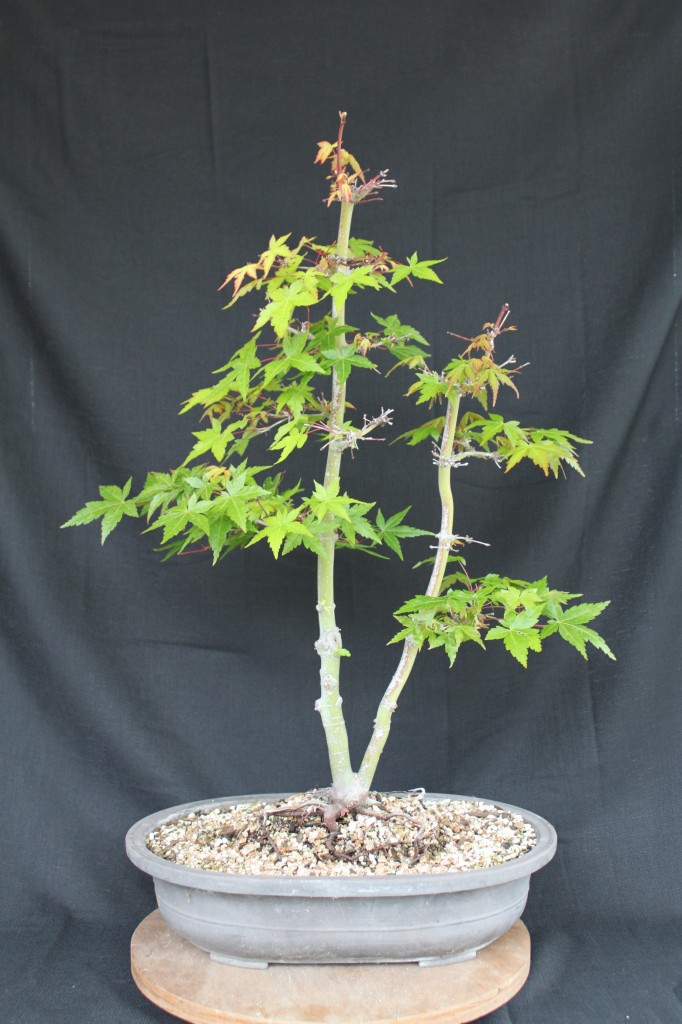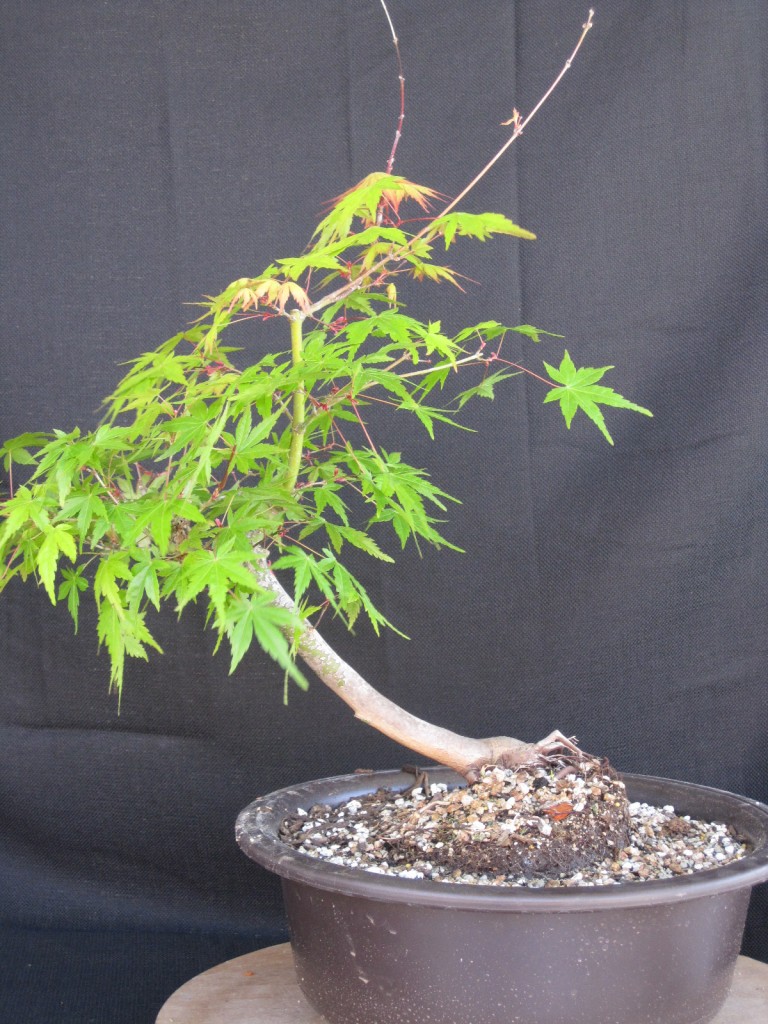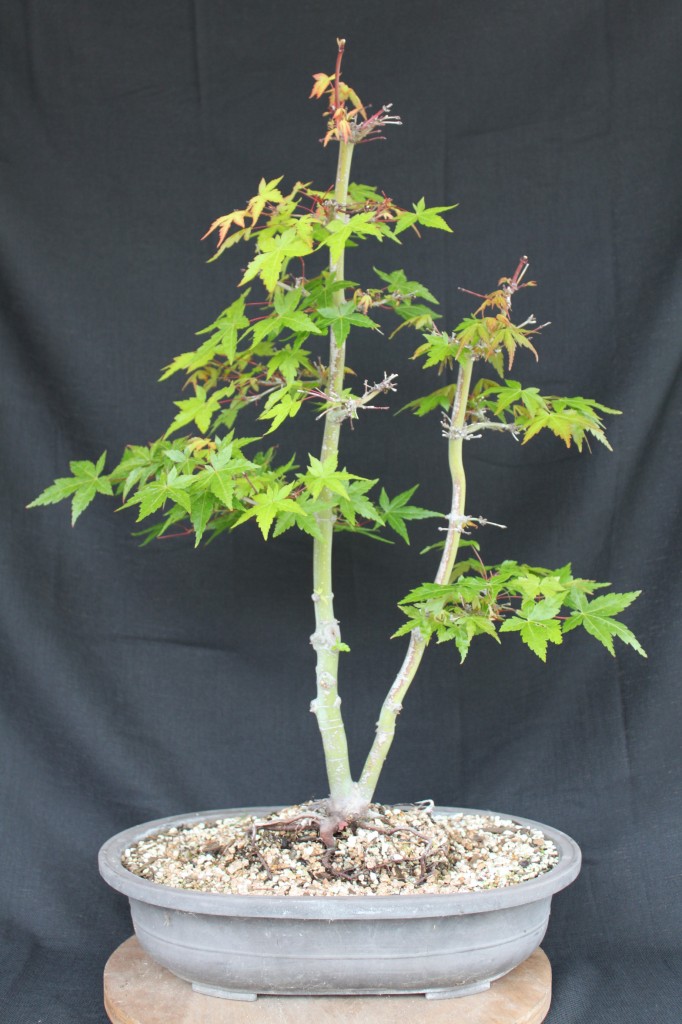Japanese Maple Bonsai
Japanese Maple Bonsai
Lacy leaves and fall color are the hallmarks of the Japanese Maple Bonsai. Japanese Maple is the quintessential deciduous bonsai, and no traditional bonsai collection is complete without one.
Background:
Acer Palmatum, the Japanese Maple, is a shrub or small tree (it reaches a maximum height of about 30 feet) native to Japan, China, Korea, and parts of Mongolia and Russia. It usually grows as an understory plant in deciduous forests, and its natural shape consists of multiple trunks diverging near ground level, supporting a dome shaped canopy of foliage. There are three known subspecies: Acer Palmatum Palmatum (commonly known as the “green” Japanese Maple or the lowland Japanese Maple; Acer Palmatum Amoenum and Acer Palmatum Matsumurae, which are native to higher elevations, and both of which are commonly known as “Mountain Maples.” They are typically characterized by slightly larger leaves, and red tinted stems.
Acer Palmatum was called kaede and momiji by the Japanese, due to the resemblance of its leaves to the hands of babies and frogs. When Swedish Doctor and Botanist Carl Peter Thunberg traveled to Japan in the late Eighteenth Century, he named the specie Acer Palmatum, keeping the Japanese terminology.
Japanese Maples have been cultivated as ornamental landscape trees by the Japanese for hundreds of years, and by Westerners since the late Eighteenth or early Nineteenth Century. Other than that, they have no known commercial use. The first specimen Japanese Maples reached England in 1820. Since that time the Japanese Maple has been extensively cultivated and hybridized by nurserymen in all temperate parts of the world. There are literally hundreds of cultivars available in nurseries, with primary focus on leaf color and shape.
Where to Get One:
You won’t be collecting one of these, unless you are lucky enough to know someone who wants one dug out of their landscape. If you want one of these trees, take a trip to the nursery. Just about every plant nursery in the temperate parts of the world has an extensive selection of Japanese Maples. You can find Green Maples, Mountain Maples, Red Maples, cut leaf and thread leaf varieties, and the only problem you will have is how to disguise the grafting scar near the base of the tree if you buy one of the more esoteric varieties.
What to Do With It After You Get It:
Fatten it up in a tub or in the ground. It is very rare to find a Japanese Maple in a nursery with a trunk large enough to make a good bonsai, and chances are whatever you buy will have a spindly little trunk with little visual appeal. It is time to muster your horticultural abilities, and get your Maple to “bulk up.” Give it all the soil, nutrients and water it wants, and try to get as much growth as you can out of your Maple for a few (or several) years before you make your bonsai. A healthy Japanese Maple can send out shoots four feet long in the mid to late spring, and your goal during the “fattening up” phase should be to make it put on as much of this kind of growth as possible.
Soil and Potting:
Japanese Maples like good drainage, but they also like a fair amount of organic matter in their soil – they burn through a lot of nutrients during leaf production. Aggregate can be decomposed granite, agricultural pumice, coarse sand, turface or diatomite, or any combination of the above. Organic can be any good potting soil.
Repotting and root pruning must take place in the early spring, before the tree starts to push new growth. Once the new buds start to swell, it is almost too late. Japanese Maples will tolerate heavy root pruning, but it must be done while the tree is still dormant.
Japanese Maples are one chance for the enthusiast to get creative with the bonsai pot. Japanese Maples will produce fall color in all but the hottest and driest climates, and the glaze on the pot can be harmonized to the leaf color (in the case of red maples) or to the fall color.
Siting:
Japanese Maples are outdoor trees, but must be kept in the shade, and sheltered from strong winds. They are winter hardy and frost tolerant. A Japanese Maple potted in well draining soil must be watered frequently and must never be allowed to dry out entirely. Japanese Maples wilt easily when they become dehydrated, and when they wilt, the usually die. Either organic or chemical fertilizers can be used, and Japanese Maples seem to respond equally well to either variety.
Pruning and Shaping:
Japanese Maples can be pruned throughout the growing season, but major branch removals and heavy pruning should be done as early in the growing season as possible. New growth can be pruned back to a single pair of leaves on each shoot for maximum density. Japanese Maples can also be leaf pruned or defoliated in order to reduce leaf size.
Japanese Maples can either be trained with wire, or by the clip and grow method. The author has used both methods. Japanese Maple branches tend to naturally align themselves horizontally, and the clip and grow method works well for informal upright and multi trunk trees. However, for slant styles and some other styles, wire must be used in order to more precisely place the branches.
Styling:
Japanese Maples are suited to all bonsai styles except formal upright and cascade, which are not natural to the species. Multitrunk styles are common since they are the species’ prevalent natural form. Japanese Maples also work exceptionally well in groups, if you can find several specimens from the same subspecies with consistent leaf shape and color.
Closing Remarks:
For the patient, Japanese Maples make beautiful deciduous bonsai. A Japanese Maple bonsai will provide you with lasting beauty and will chronicle the change of the seasons.

